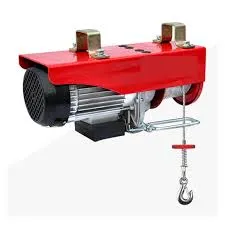


Understanding Crane Dynamometers An Essential Tool for Heavy Lifting
In the realm of construction and industrial operations, heavy lifting is a critical task that requires precision and safety. One of the essential tools used in these operations is the crane dynamometer. This device plays a pivotal role in ensuring that loads are handled safely, efficiently, and within the operational limits of the crane.
A crane dynamometer is an instrument used to measure the weight of heavy loads being lifted by cranes. It provides real-time feedback on the tension in the lifting cable, allowing operators to make informed decisions about load management. This device can be categorized into two main types mechanical and digital. While mechanical dynamometers use springs to measure tension, digital dynamometers provide electronic readings, often accompanied by advanced features such as overload alarms, data logging, and wireless connectivity.
The importance of using a crane dynamometer cannot be overstated. Safety is paramount in any lifting operation, and overloading a crane can lead to catastrophic failures, resulting in accidents, injuries, and loss of life. By accurately measuring the weight of the load, a dynamometer ensures that the crane operates within its rated capacity. This is particularly crucial in environments where multiple lifts are ongoing simultaneously, and load miscalculations can lead to severe consequences.
Moreover, crane dynamometers aid in compliance with safety regulations and industry standards
. Many industries have specific guidelines regarding lifting operations, and ensuring that these guidelines are met is essential for operational certifications. Using a dynamometer not only promotes workplace safety but also demonstrates a commitment to maintaining high standards in lift operations.
In addition to enhancing safety, crane dynamometers contribute to efficiency in lifting operations. With real-time weight readings, operators can quickly adjust their lifting strategies, whether that means redistributing weight or using additional equipment to facilitate a smoother lift. This capability can significantly reduce downtime and improve overall productivity on-site.
Furthermore, advances in technology have transformed the capabilities of crane dynamometers. Modern devices can be integrated with other technological solutions, such as load monitoring systems and crane controls. This integration allows for automated lifting processes where data regarding the load is continuously analyzed, enabling predictive maintenance and improved operational planning.
When selecting a crane dynamometer, it is essential to consider factors such as weight capacity, range of measurement, accuracy, and any specific features that may be required for the particular lifting application. For instance, a construction site may benefit from a portable dynamometer that can be easily moved and used across various lifts, while a manufacturing facility might require a stationary unit with advanced monitoring capabilities.
In conclusion, crane dynamometers are indispensable tools in the construction and industrial sectors, enhancing safety and efficiency during heavy lifting operations. By providing accurate weight measurements and ensuring compliance with safety standards, these devices protect both personnel and equipment from the risks associated with overloading. As technology continues to evolve, the functionality and capabilities of crane dynamometers will likely expand, further enhancing their role in safe and efficient lifting practices. Embracing these innovations is vital for any organization that relies on heavy lifting solutions.



